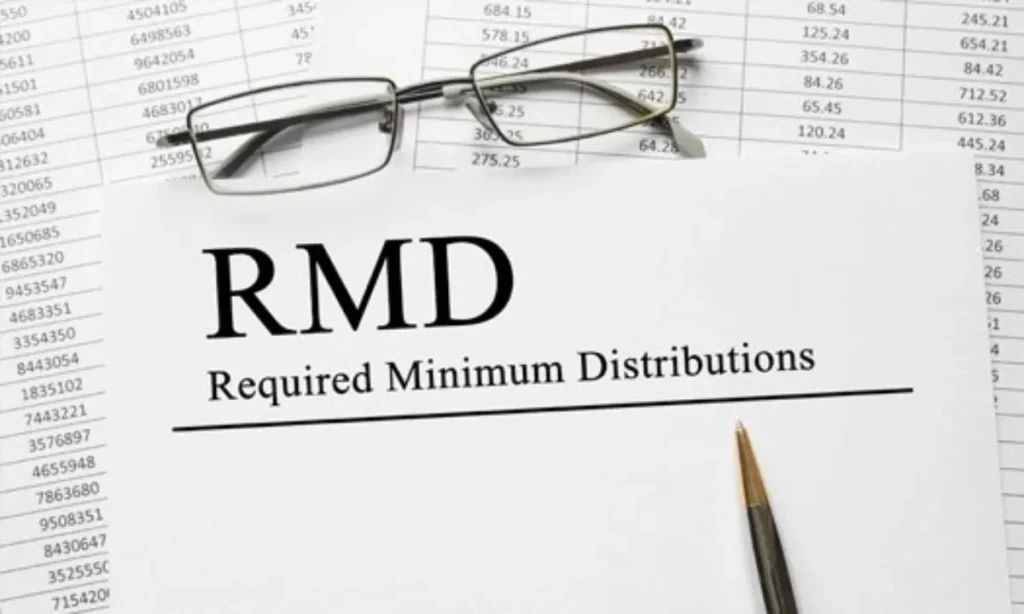For years, retirees in the United States have had to follow strict rules about when and how they withdraw money from their retirement savings accounts. These withdrawals, called Required Minimum Distributions (RMDs), apply to tax-deferred accounts such as traditional IRAs, 401(k)s, and 403(b)s. The rule ensures that people eventually pay taxes on the money that has grown tax-free during their working years. Skipping these mandatory withdrawals or withdrawing less than required can lead to harsh IRS penalties, which is why it’s essential to stay informed about the changes made under the SECURE 2.0 Act.
Before 2020, retirees had to start taking these distributions at age 70½, and in 2019, the original SECURE Act raised that to age 72. However, in late 2022, Congress passed the SECURE 2.0 Act, introducing one of the most significant updates to retirement distribution rules in decades. These new rules give retirees more flexibility, more time for their investments to grow tax-deferred, and fewer penalties for making mistakes.
Table of Contents
What Changed Under the SECURE 2.0 Act?
The new law brought several key updates that directly affect how and when retirees must take withdrawals. Most importantly, it raised the starting age for RMDs once again. Beginning in 2023, retirees can now wait until age 73 to begin taking mandatory withdrawals, and starting in 2033, that age will rise to 75. This is a major shift that allows seniors to let their investments grow longer before paying taxes on them.
Another major change is the reduction of penalties for missing RMDs. In the past, if you failed to take your required withdrawal on time, the IRS could charge you a 50% penalty on the amount you should have withdrawn. Under SECURE 2.0, that penalty has been cut to 25%, and if you fix the mistake quickly, it can drop even further to 10%. That’s a big relief for retirees who might miscalculate or forget a withdrawal deadline.
The law also expanded Roth-related benefits. Starting in 2024, RMDs will no longer apply to Roth 401(k) and Roth 403(b) accounts during the owner’s lifetime matching the long-standing rule for Roth IRAs. This means more tax-free growth potential for those saving through employer-sponsored Roth plans.
A Quick Look at the New RMD Ages
| Year or Birth Period | New RMD Start Age | What It Means |
|---|---|---|
| Born before 1951 | 70½ | Follows old rules (pre-SECURE Act) |
| Born 1951-1959 | 73 | Must start withdrawals at age 73 |
| Born 1960 or later | 75 | Can wait until age 75 to begin RMDs |
This gradual age increase gives retirees more breathing room to plan strategically. For example, someone who turns 72 in 2024 doesn’t have to withdraw that year they can wait until 2025 when they turn 73. Similarly, those born in 1960 or later will have an even longer runway before RMDs begin.
Why These Changes Matter for Your Retirement

The new timeline allows more control over your income and taxes. If you don’t need the money right away, delaying RMDs means your savings continue to grow tax-deferred, potentially increasing your retirement nest egg. This can be especially beneficial for wealthier retirees who want to manage tax brackets more effectively or plan strategic Roth conversions before RMDs begin. However, there’s a flip side. Waiting too long to withdraw may lead to larger future balances, which can push you into a higher tax bracket later or increase your Medicare premiums. This makes planning essential sometimes taking smaller withdrawals earlier may reduce long-term taxes. The flexibility offered by SECURE 2.0 means retirees can better align withdrawals with other income sources like Social Security or pensions, making overall income smoother and more predictable.
Key Highlights You Should Know
Here are a few of the most important updates every retiree should keep in mind under the new SECURE 2.0 rules:
RMD age increases 73 now, 75 starting 2033.
- Penalties reduced: From 50% down to 25%, and only 10% if corrected quickly.
- No RMDs for Roth 401(k)s or 403(b)s starting in 2024.
- Charitable giving made easier: You can make Qualified Charitable Distributions (QCDs) directly from IRAs up to $100,000 a year to satisfy RMDs while supporting causes you care about.
- Spousal flexibility improved: Surviving spouses now have more options for how to handle inherited retirement accounts.
What Retirees Should Do Next
The best move now is to take stock of your overall retirement plan. Understand when you’ll be required to take your first RMD based on your birth year and how much you might owe in taxes. Consider whether converting some funds to a Roth account makes sense while you’re in a lower tax bracket, since those funds can grow tax-free and won’t be subject to future RMDs.
It’s also a good idea to review your charitable giving strategy, as Qualified Charitable Distributions can both satisfy your RMD and reduce your taxable income. And if you’re unsure about the right timing for withdrawals, consult with a financial advisor or tax planner familiar with the SECURE 2.0 changes to help minimize taxes while maximizing long-term growth.
The SECURE 2.0 Act gives retirees a chance to plan smarter and keep more of what they’ve earned. With the new RMD rules, lower penalties, and increased flexibility, this is a perfect time to revisit your retirement strategy and make sure your savings work for you not against you.
Frequently Asked Questions
- When do I have to start taking RMDs now?
If you turned 72 after December 31, 2022, you start RMDs at age 73. If you were born in 1960 or later, it’s age 75. - What if I forget to take my RMD?
The penalty has been reduced from 50% to 25%, and it can be lowered to 10% if you fix it promptly. - Do Roth IRAs have RMDs?
No, Roth IRAs don’t require RMDs during the owner’s lifetime. And starting in 2024, Roth 401(k)s and Roth 403(b)s are also exempt. - How can I reduce my tax burden from RMDs?
You can spread out withdrawals over several years, make Roth conversions early, or use QCDs to donate directly to charities without adding taxable income. - Is delaying RMDs always the best choice?
Not always. While delaying can boost growth, it might also lead to higher taxes or Medicare surcharges later. Balance is key.



